Venice (Venezia in Italian) is the capital of the Veneto region in the Northeast of Italy. It sits on an archipelago of 118 small islands inside the Venetian Lagoon. These are separated by 177 canals and connected by over 400 bridges.
The ancient Veneti people were the first to live in the Venice region from the 10th century BC. Venice has been a wealthy city for most of its existence, especially during the Middle Ages and Renaissance. It was an important centre for art, finance, and international trade. Venice was also the capital of the sovereign state of the Venetian Republic from 697 until 1797.
Today Venice is one of Italy’s hotspots because of its iconic canals, stunning architecture and culture, narrow streets, art, festivals, unique islands, and romantic atmosphere. Venice is popular with couples, cruise tourists, families, and solo travelers alike.
I visited this charismatic city in May 2024 and I’m psyched to share my experience on How to Spend 48 Hours in Venice, Italy with you!
Disclosure: I only recommend products that I’ve used in the past, and all opinions expressed in this post are my own. This post contains affiliate links. If you use one of the links throughout the page to buy something, I may earn a small commission at no extra cost to you. Thank you!
Things to See and Do in Venice
Visit Basilica di San Marco (St. Mark’s Basilica)
Address: Piazza San Marco, 328, 30100 Venezia VE, Italy
One of Venice’s most popular attractions, the legendary Basilica di San Marco was built to honour Saint Mark, the patron saint of Venice. His remains are here as well. It sits proudly on Piazza San Marco and the current basilica was completed in 1063.
Basilica di San Marco was also built to represent the power of the Venetian Republic. In fact, it’s One of the most Beautiful Cathedrals in Europe! Basilica di San Marco is famous for its domes and spires, as well as 11th-century mosaics, marble-covered walls, statues, and five gold-covered Byzantine domes.
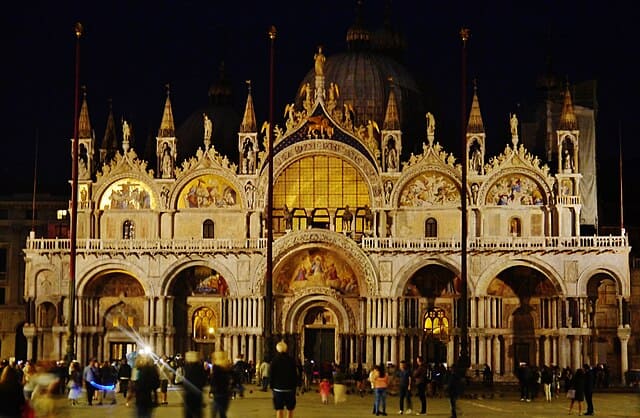

West Façade of St. Mark’s Basilica at Night (Photo credit: Zairon on Wikimedia Commons) and the interior of St. Mark’s Basilica.
To see the cathedral from the inside, I recommend buying a Skip the line ticket starting at 6 EUR per person. Standard tickets are 3 EUR per person, but there’s a very good chance you’ll have to wait in line for a long time!
Basilica di San Marco is open daily from 9:30 am to 9:15 pm until November 11, 2024, and 9:30 am to 7:15 pm during the winter months.
Walk around Piazza di San Marco (St. Mark’s Square)
Stunning Piazza di San Marco is Venice’s largest and most famous public square. It has belonged to the city since the 9th century and is the lowest point of Venice. So if there’s Acqua Alta (flooding which occurs several times a year), Piazza di San Marco is the first spot to be flooded.
If this happens, authorities put up wooden foot bridges for everyone, so it’s still possible to visit!
Aside from Basilica di Marco and its iconic bell tower, this square is home to the Doge’s Palace, Museo Correr, St. Mark Column, the National Archaeological Museum, and Torre dell’ Orologio (Clock Tower). The St. Mark’s Square Museum Pass includes entry to some of these places.

Piazza di San Marco is also beautiful at nighttime in the warmer months, when there are tons of live music performances. Visitors can also take a break at one of the (expensive) cafés and restaurants here.
Spend a Few Hours on Murano Island
Another must visit attraction in Venice is Murano. It’s a series of islands in the Venetian Lagoon, about 1.5 km (0.93 miles) north of the city centre. Murano is famous for its Unique Glassware, which has been created here for many centuries (that’s why it’s also called The Glass Island).
If you’re visiting Murano, be sure to stop by at least one of the local Glassblowing Factories.
I walked around the Wave Murano Glass Factory (Fondamenta da Mula 152, 30141 Murano, Venezia VE, Italy) for a bit. I was amazed how quickly the workers turned the hot glass into unique artwork. Besides, you cannot miss the beautiful finished glassware inside the courtyard and gift shop!
Visitors can also book a Glassblowing Beginner Class or a Guided Factory Tour here.
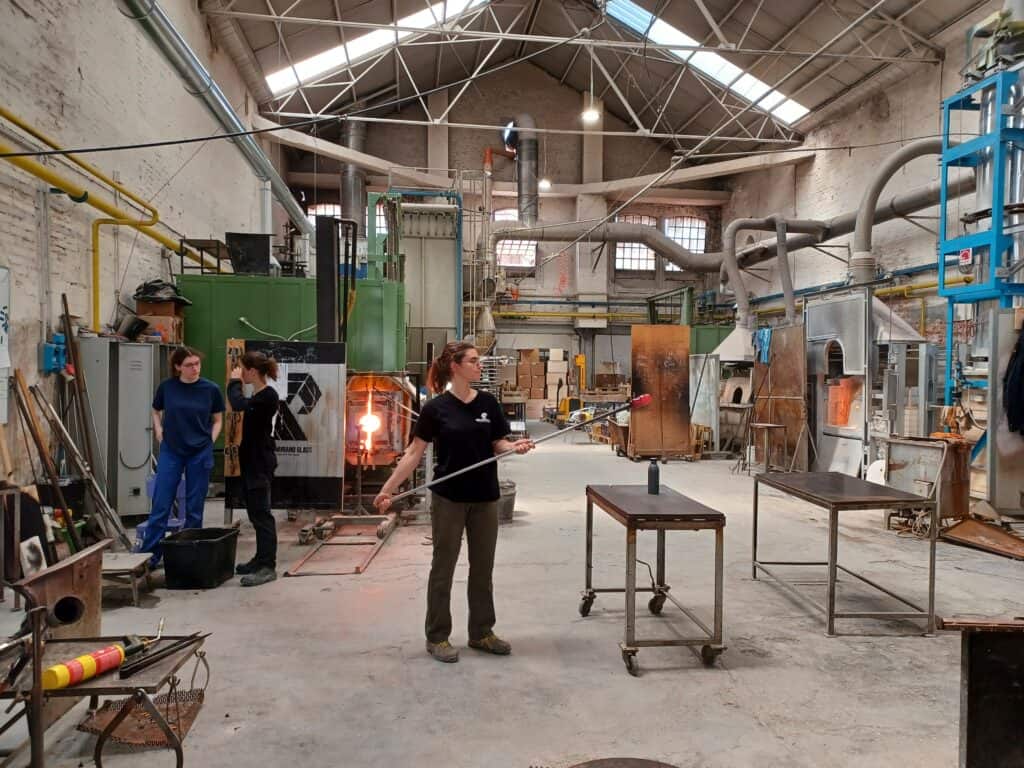

Since Murano is so famous, the centre gets quite busy with tourists. You’ll find one souvenir shop next to the other, and sadly, many glass pieces are quite expensive.
But there are a few exceptions, like four tiny glass animals (a rat, bird, dog, and penguin) that I snatched at one of the stores for only 10 EUR!
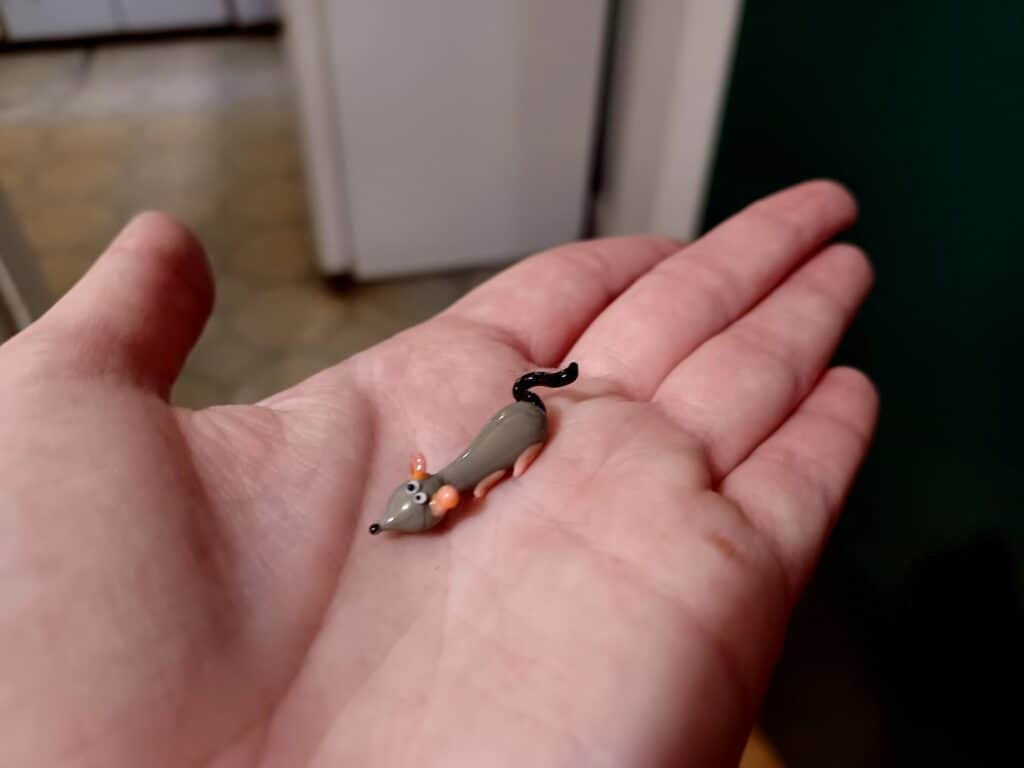

My glass rat and view from one of Murano’s bridges.
Of course, Murano Island has lots of tasty gelato, restaurants and cozy cafés as well!
The best way to get from Venice to Murano is to take the vaporetto (waterbus) lines 41, 42, DM, or LN (about 50 minutes).
Wander around on Burano Island
If you’re on the vaporetto already, it’s a good idea to stop by Burano as well! The main attraction of this charming island are the many brightly coloured houses. But there’s the Museo del Merletto (lace museum), many seafood restaurants, and local art galleries and shops, too.
According to legend, fishermen lived on Burano and painted their houses in such bright colours so they could see them while being out on the water for fishing. Farmers and lace workers lived here as well. About 3,000 people live on Burano Island today.
I was amazed that rough-looking houses stood right next to newly painted houses and the outside décor (e.g. plants, bicycles, window shutters, and clothes lines) added even more charm! I also like that Burano has a leaning bell tower, so it was okay that Pisa wasn’t on my itinerary this time, lol!
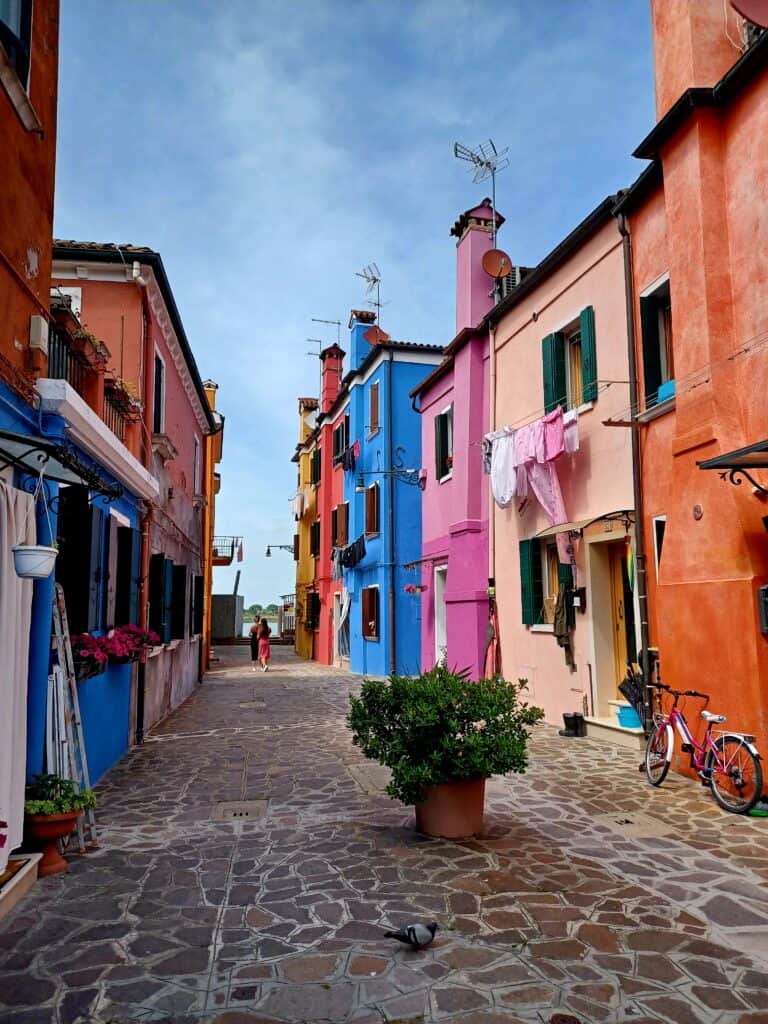
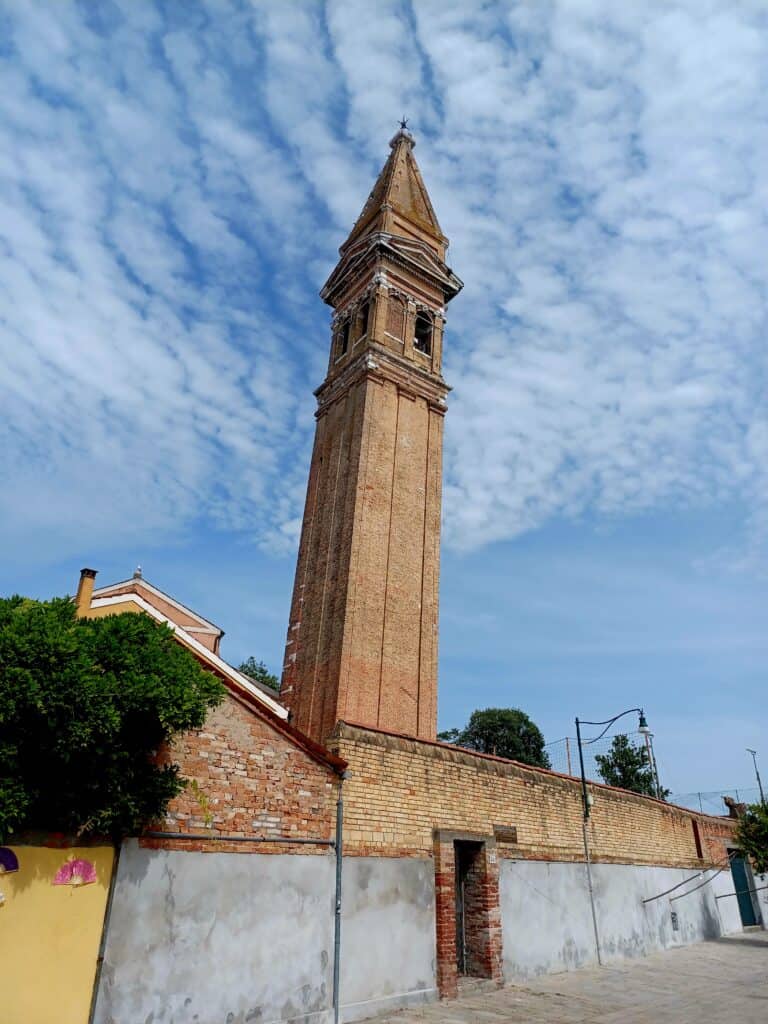
Explore The Jewish Ghetto
Address: Campo del Ghetto Nuovo, C. del Magazzen, 2882, 30121 Venezia VE, Italy
During your Venice visit, be sure to save a few hours to explore The Jewish Ghetto. From 1516 to 1797, the Jews of Venice were forced to live here in separation from the rest of the city. It’s Italy’s oldest ghetto.
Mostly German and Italian Jews, but also some Levantine and Ponentine families lived in The Jewish Ghetto. They were only allowed to leave their houses during the day, and were locked up and strictly guarded at night. 1,626 inhabitants lived here when the Jewish Ghetto discrimination ended in 1797.
Today visitors can look at five synagogues and some are open to the public. Besides, watch out for Stolpersteine (stumbling blocks), small concrete cubes with a brass plate mentioning the name and life dates of victims of the Nazi regime who lived in this district.
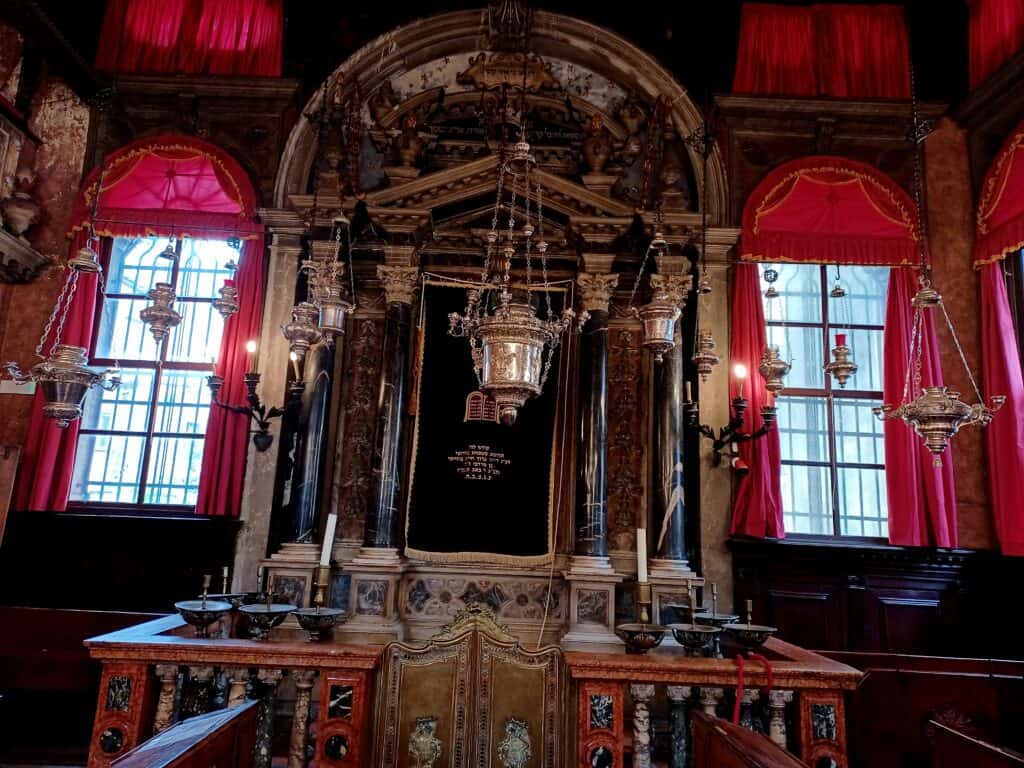
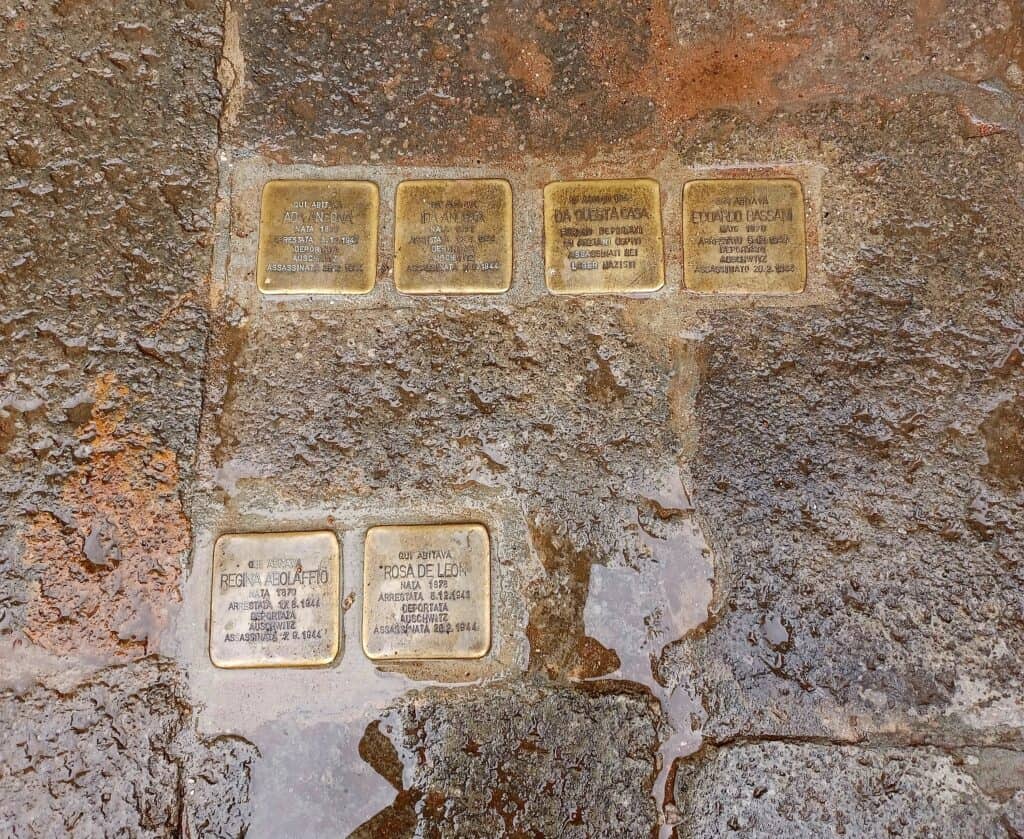
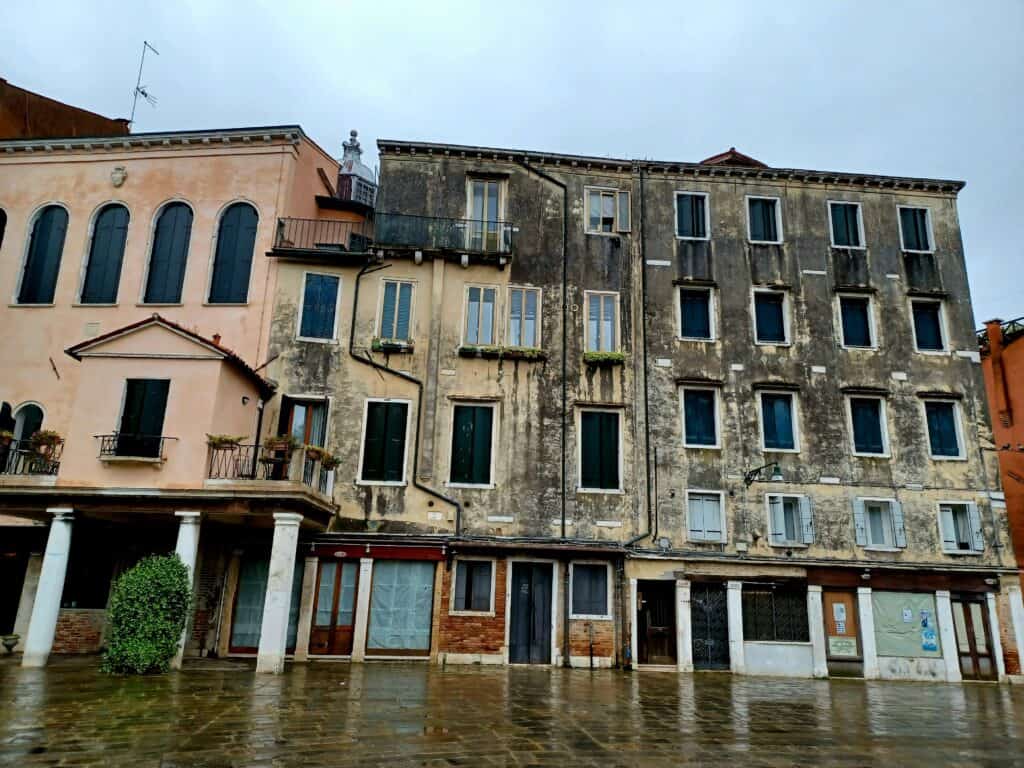
Visitors need to pay a fee of 12 EUR at the Ticket Office to tour the Jewish Ghetto independently, which includes a free audio guide. Guided tours of the Jewish Ghetto (in Italian or English) can be booked several times a day as well.
The Jewish Ghetto Complex is open Sunday-Thursday from 10 am to 6 pm and Fridays from 9 am to 5 pm (closed on Saturdays and Jewish holidays) until November 4th, 2024.
There are art galleries, kosher restaurants, shops, and museums inside the Jewish Ghetto, too.
Walk along or Take a boat on The Grand Canal
While in Venice, it’s impossible to miss The Grand Canal. At 4 km (2.48 miles) long, it’s Venice longest and most famous canal. It also separates one half of the city centre from the other.

There are four bridges crossing The Grand Canal:
Ponte di Rialto (Rialto Bridge): Venice’s most charming and oldest bridge that consists of Istrian stone. The current version of this bridge was completed in 1591.
Ponte dell’ Accademia (Accademia Bridge): Built in 1854, this used to be a steel bridge. It was turned into a wooden bridge later.
Ponte degli Scalzi (Bridge of the Barefoot) is the closest bridge to Stazione di Venezia Santa Lucia, Venice’s central train station.
Ponte della Costituzione (Constitution Bridge). Venice’s most famous bridge was designed by the Spanish architect Santiago Calatrava. It was only opened in 2008.
I walked across the last two bridges after first arriving at the train station and then moving on to the bus station to get to my accommodation.
Of course, you can also cross The Grand Canal via vaporetto or get comfortable inside one of the iconic traghetti (gondolas)! Visitors can book shared or private Gondola Tours on The Grand Canal through various tour operators.

Where to Stay in Venice
While on a trip, I think it’s a great idea to experience at least once how the locals live!
That’s why I decided to stay at Casa Giorgia (10 Via Passo del Giovo, 30173 Mestre, Italy)! If you like peace and quiet, this charming and bright 1-bedroom apartment will have you covered. It’s inside a beautiful and safe residential area, has laundry facilities, a full kitchen, and everything was spotless!
Besides, my host responded quickly to any questions, and the place was quite budget-friendly, too! Trams and buses take you to the city centre in 30-40 minutes. Casa Giorgia is in Mestre, one of Venice’s boroughs on the mainland.
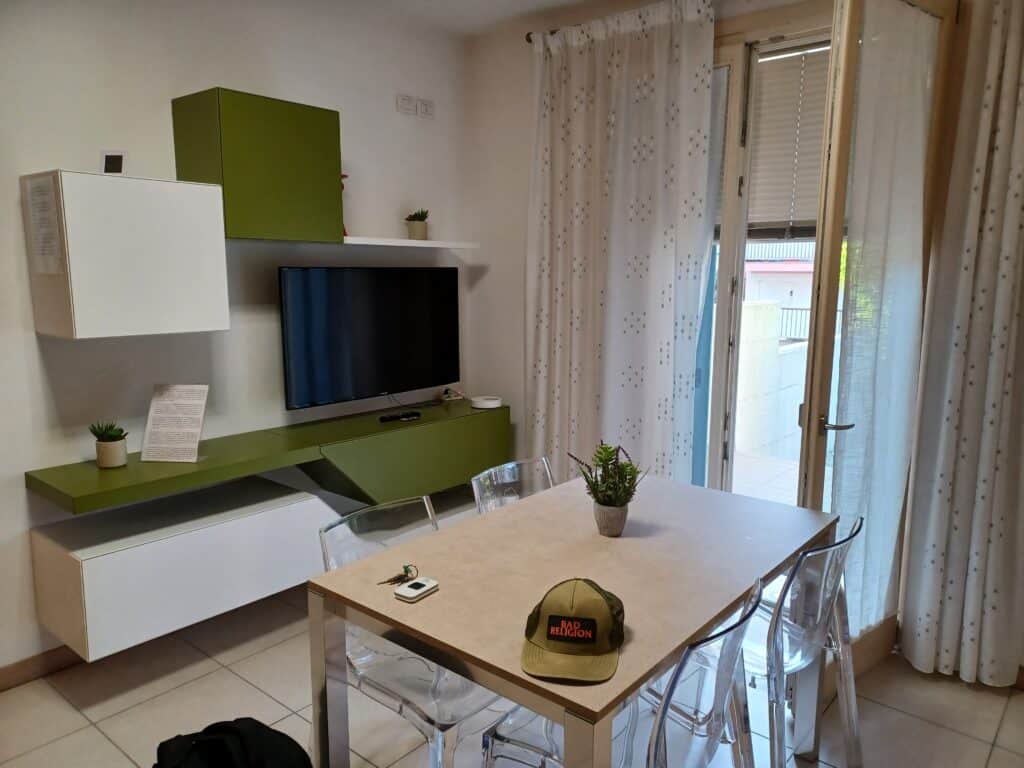

Or if you prefer to live like a local close to Venice’s city centre, Casa Camilla (Corte Zappa, 2820, 30121 Venezia VE, Italy) is a great choice! This spacious 1-bedroom apartment inside an older Venetian house with a terrace and full kitchen is just a short walk from stores, cafés, restaurants, and Rialto Bridge.
Where to Eat & Drink in Venice
Like any other big Italian city, Venice has tons of restaurant options for every taste and budget.
Here are my favourites:
Movie Pizzeria Pub Spaghetteria
Address: Via S. Donà, 287/D, 30174 Venezia VE, Italy
While this restaurant doesn’t look super fancy from the outside, I decided to try it because of its great reviews on Google.
Not only was the staff super kind, the prices were quite reasonable and the portions were huge! I also loved the classic movie posters on the wall! Their Pesto alla Genovese was so creamy, OMG! So if Phoebe from Friends would ask me “Is their Pesto the Besto?” My answer would be “Hell yeah!”
So I’m glad that I gave Movie Pizzeria Pub Spaghetteria a chance. They also serve so-called movie pizzas, which I didn’t see anywhere else in Italy!
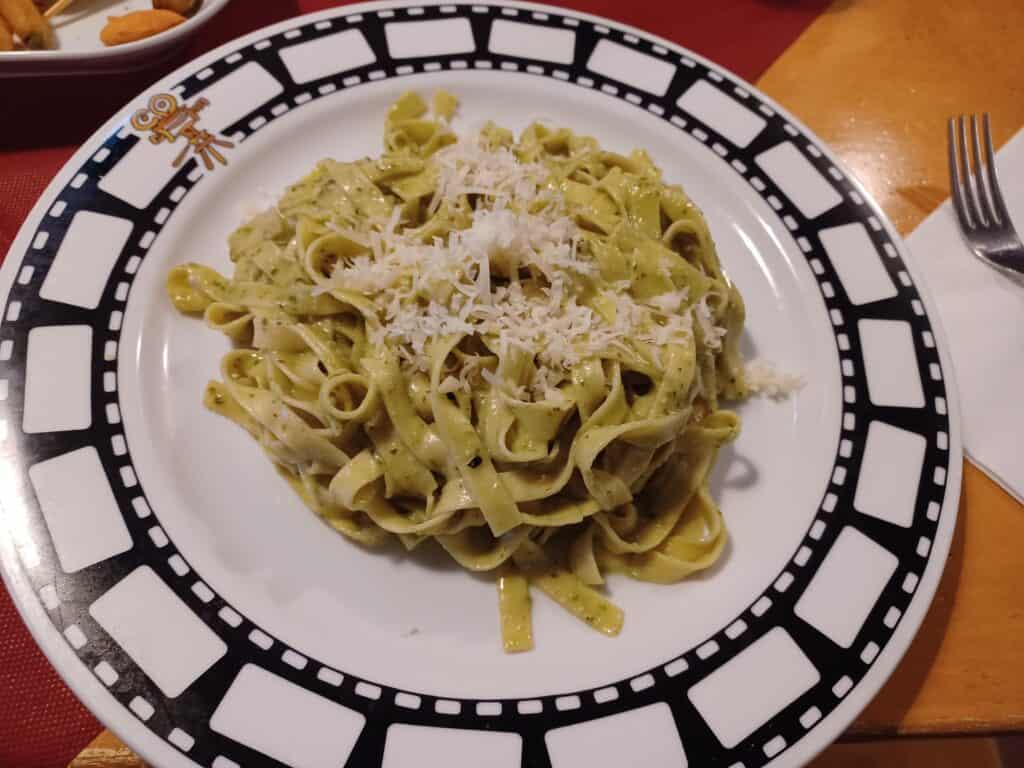

Pizzeria Ristorante Al Faro
Address: Cl. Ghetto Vecchio, 1181, 30121 Venezia VE, Italy
Getting hungry while exploring the Jewish Ghetto? Then I recommend checking out Pizzeria Ristorante Al Faro. They serve classic Italian food (antipasti, pasta dishes, pizza, seafood, etc.), and their multilingual menu is very handy!
I ordered their tasty and super fresh Pomodoro e Basilico Bruschetta (Tomato and Basil on toasted bread) and it kept me full for a long time! After the meal, the nice waiter even allowed me to sit on their covered outside chairs until the rain had stopped!
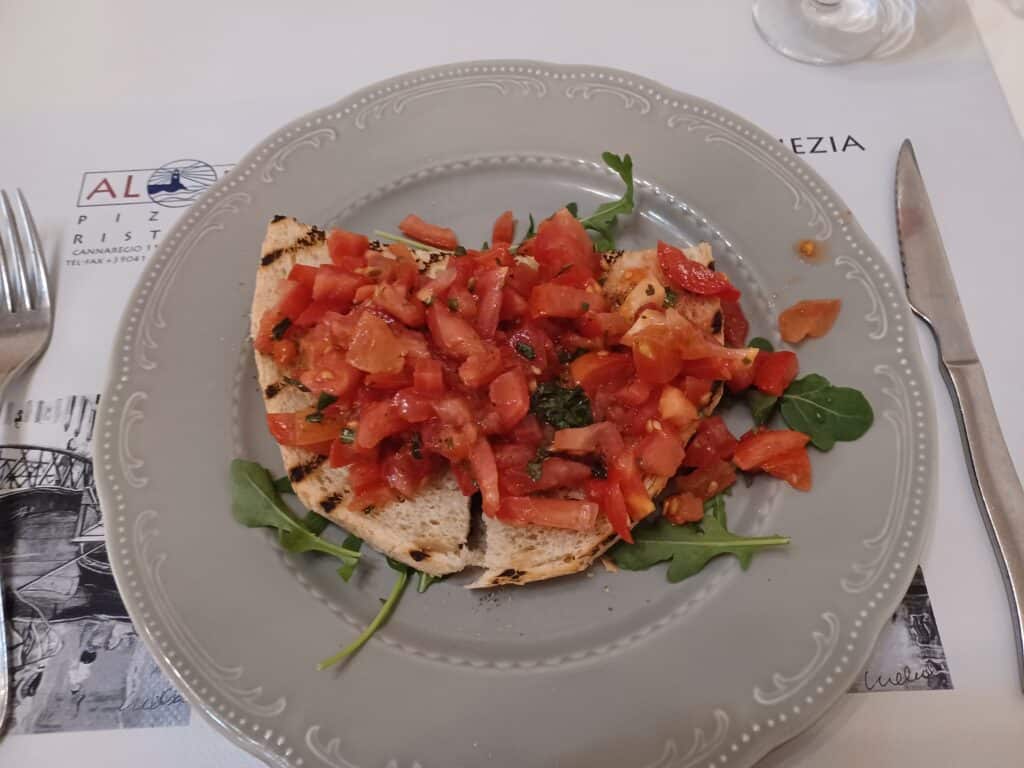
Aside from eating at these restaurants, I got groceries from Prix Quality (Via Ugo Vallenari, 31, 30173 Venezia VE, Italy), a large supermarket close to my apartment. Then I cooked a few yummy meals which saved me quite a bit of cash! 😀
How to Get to and Around Venice on Public Transit
For visitors who depend on public transit, getting to and around Venice is pretty easy.
International and domestic trains go to Venice’s Stazione Santa Lucia several times a day. It’s right inside the city centre, so it’s easy to get to your destination after you’ve arrived.
Venice also has two nearby airports that serve flights from/to domestic, European, and international destinations: Venice Marco Polo International Airport and Venice-Treviso Airport. The Alilaguna company offers waterbus transport from Marco Polo Airport to the city centre and vice-versa.
Some cruise ships still go to Venice as well.
In the city centre, the only options to get around are walking, taking a vaporetto, gondola, or an (expensive) private water taxi. Walking tours are available, too. Cars are not allowed here. Venice is also quite spread out, so it can take a bit of time on the boats to get to your destination.

If you need to get to the mainland, there are buses and trams available from the city centre. Many of them stop at Piazzale Roma, which is just a short walk from Santa Lucia train station.
Is Venice a Safe City?
In general, Venice is a mostly safe city to travel and walk around.
But same as in other popular European cities, it’s important to watch out for pickpockets and petty theft, which can happen in very touristy areas (e.g. at Piazza di San Marco). So keep an eye on your luggage and don’t flash your valuables, either.
As a solo female traveler, I didn’t have any issues during my Venice visit. I wore my valuables (e.g. phone, passport, and wallet) next to my body and hid them very well.
The Best Time to Go to Venice
Venice is packed with tourists and temperatures can get quite hot during the summer months. Besides, prices are its most expensive, so I’d avoid visiting Venice at this time.
Instead, visiting Venice in the spring is much better. It’s not as busy with tourist crowds and temperatures are more bearable. There are festivals as well, e.g. the Vogalonga in May, which is a 30 km (18 mile) rowing competition around the Venetian Lagoon. Participants can use kayaks, canoes, dragon boats, gondolas, stand-up paddleboards, etc.!
Venice is also nice and a bit less crowded in the fall and winter, but acqua alta (flooding) can happen during this time of the year. The only time when it’s crazy busy is in February/early March because of the colourful Carnival of Venice.
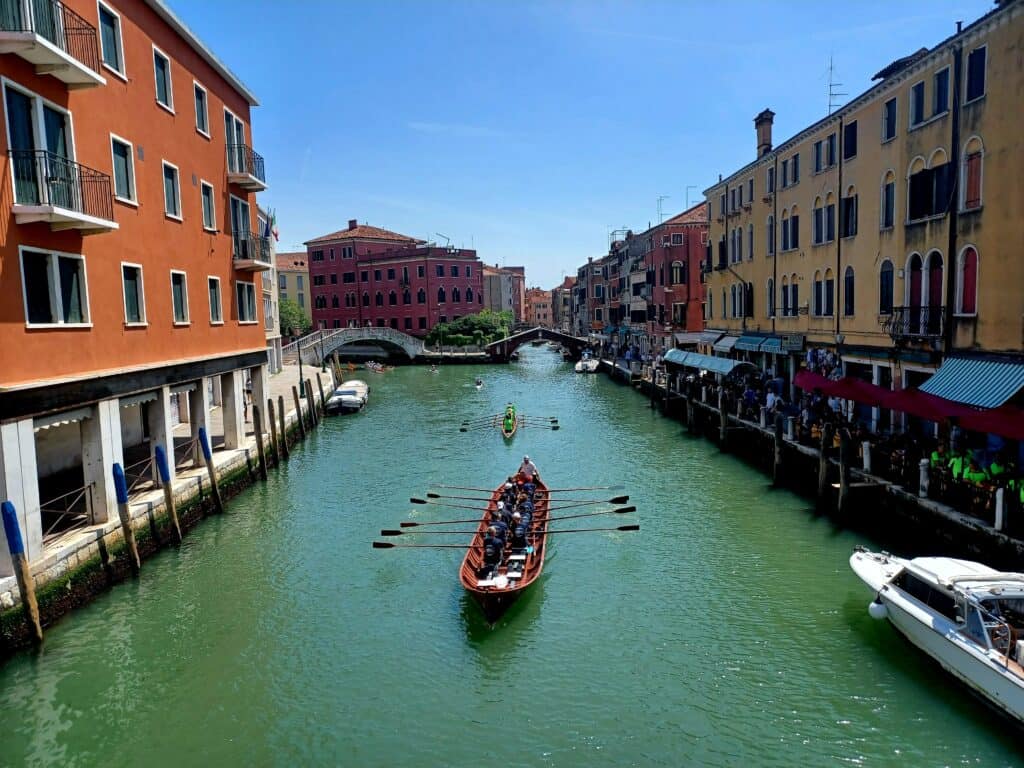
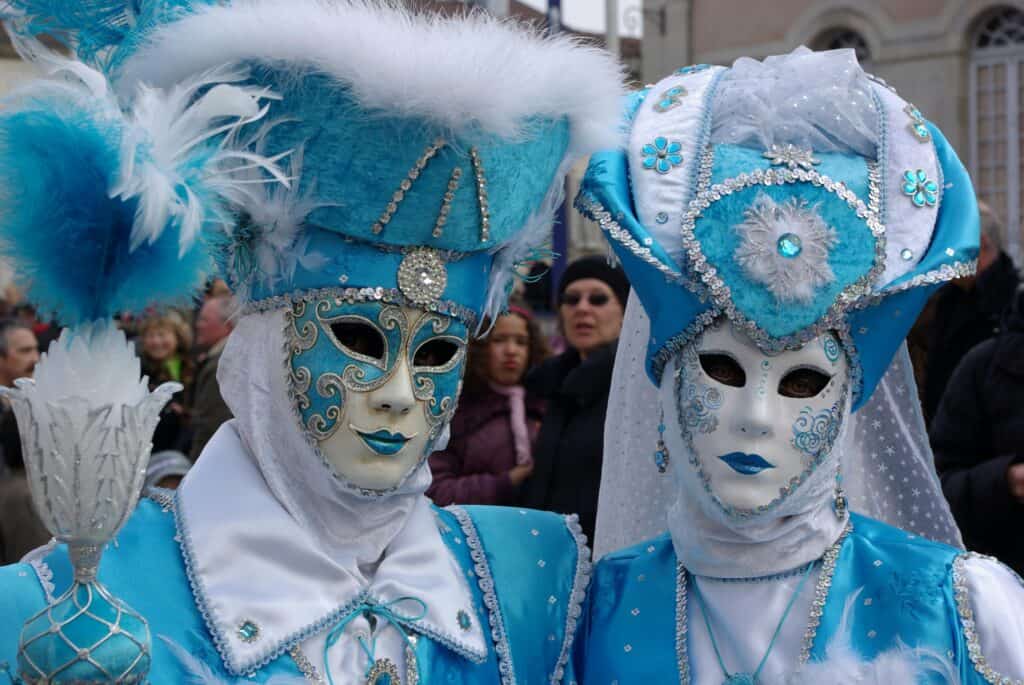
Pic #1: Rowers going around the Venice canals during Vogalonga. Pic #2: Venice Carnival. Photo credit: Norbert Ulrich on Pexels.
Other Things to Keep in Mind when Visiting Venice
As one of Italy’s most popular cities, Venice is quite expensive. For example, my jaw went slack when I saw the price for using public washrooms in the city centre: 1.50 EUR! That’s the highest I’d ever seen in Europe! So be prepared for high prices and remember to bring some coins, lol!
Unfortunately, overtourism has been a big issue in Venice for several years. Only 50,000 locals live here permanently, but around 20 million tourists come to Venice each year! Many of them are daytrippers from a cruise ship, so the government banned many large ships from entering the city in 2017 and 2021.
Besides, property prices are crazy high, and many owners turn them into holiday accommodations, so there’s less room for locals. Some tourists also act disrespectful during their visit, such as by swimming in the canals or having a picnic on the bridges.
So a Tourist daytrip fee of 5 EUR was implemented for Venice’s city centre in late April 2024. It was valid during peak dates from late April to July 2024. Only time will tell if this helped control the tourist crowds, and who knows if it will be renewed in the future?
48 Hours in Venice, Italy: Wrap Up
So as you can see, there are tons of fun things to see and do in 48 Hours in Venice, Italy! My favourites were Burano and Murano Island, as well as the Jewish Ghetto, as they are such unique attractions!
While it was quite busy with tourists during my visit, I noticed that most people stick to certain areas. So it was relatively easy to escape the crowds and appreciate what makes Venice and its surroundings so special.
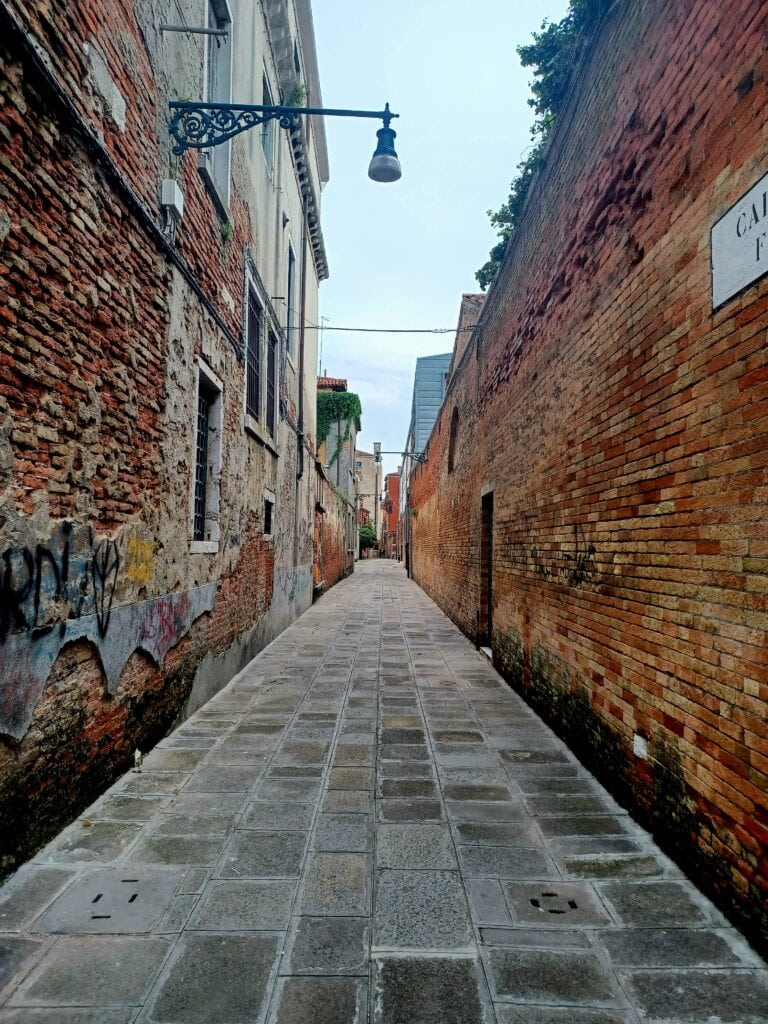

Empty side streets in Venice’s city centre and on Murano Island.
With Venice offering so many awesome attractions, I was only able to scratch the surface this time. But if you need more inspiration, Nomadic Matt’s Travel Guide tells you about many more cool things to see and do in Venice!
Traveling around Italy for a while? Then check out these posts:
The 11 Best Things to Do in Verona, Italy in One Day
Is Rimini, Italy Worth a Visit?
- 9 REASONS TO VISIT LEIPZIG, GERMANY FOR A DAY - April 7, 2025
- ONE DAY IN ANCONA, ITALY: THE 6 BEST THINGS TO DO IN 2025 - February 28, 2025
- THE ULTIMATE SOUTH COAST OF ICELANDITINERARY: THE PERFECT DAY TRIP FROM REYKJAVIK - February 1, 2025


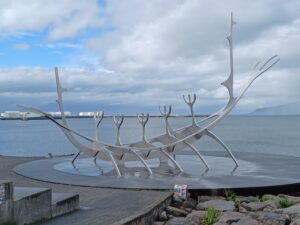
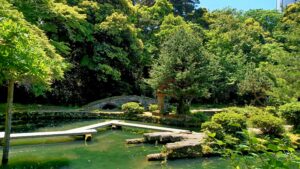
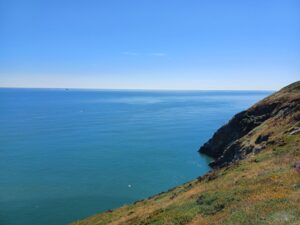

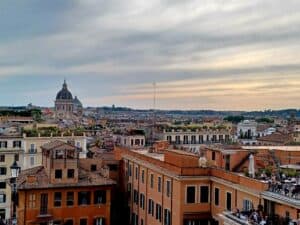
Leave a Reply